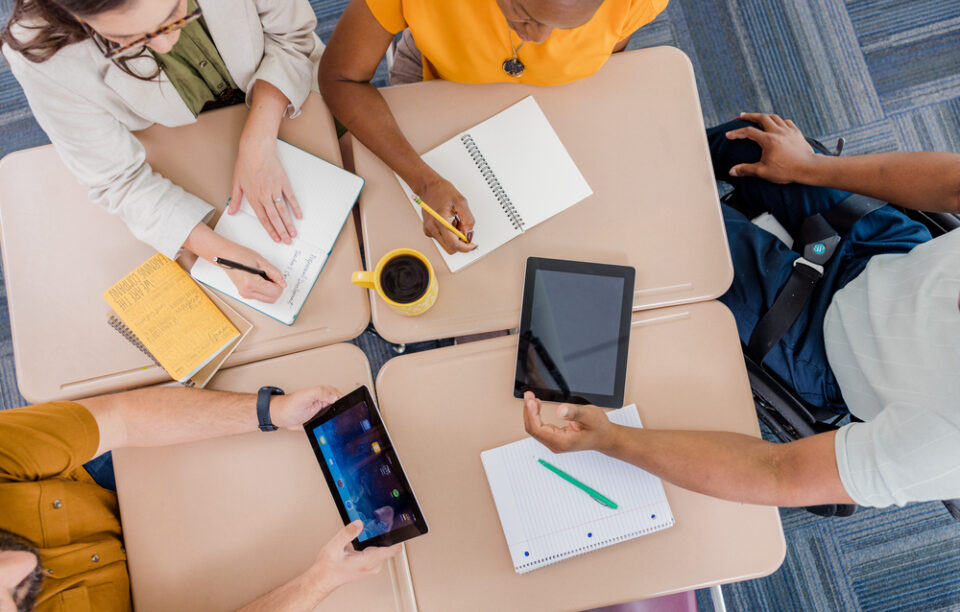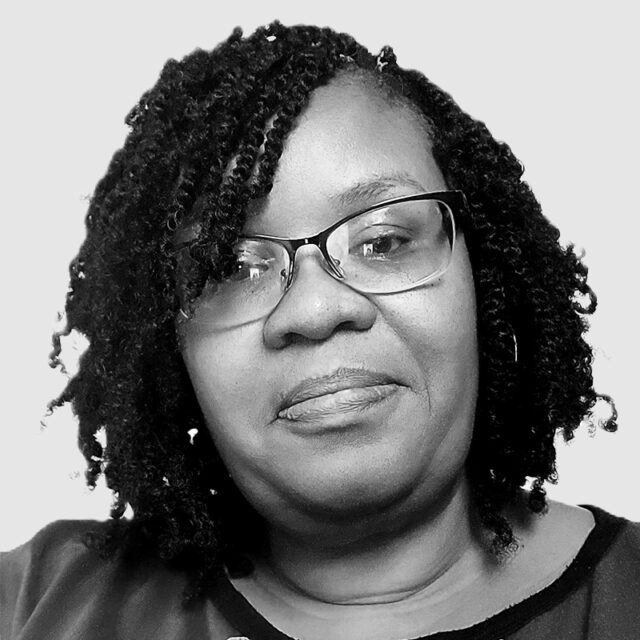
Have you ever taught a lesson and questioned whether your students truly grasped the concepts?
Early in my career, my focus was on delivering content, much like the teachers I had learned from, relying on traditional, teacher-led instruction. Math lessons centered around direct instruction, with minimal opportunities for discussion or student engagement, making it challenging to apply concepts beyond the classroom. At the time, I did not prioritize setting personal learning goals outside of the annual review process.
Over time, I came to understand that in order for my students to grow, I needed to grow as well. Demonstrating solutions alone was insufficient. I had to cultivate an environment where students actively explored and applied their learning. This realization marked the beginning of my journey toward understanding the value of goal setting and becoming a more effective math teacher.
No matter your experience level, setting clear learning goals gives you direction, encourages ongoing growth, and helps you stay connected to the passion that brought you into teaching. As the field evolves with new pedagogical approaches, technologies, and student needs, well-defined goals serve as a foundation for navigating challenges and achieving lasting fulfillment in your work.
What are professional learning goals?
Professional learning goals are intentional, growth-oriented commitments designed to help teachers refine their instructional practice and enhance student success. These goals may focus on improving teaching strategies, deepening subject-matter expertise, or exploring innovative approaches such as integrating technology and strengthening classroom management. Whether established through formal evaluations or inspired by personal aspirations, professional learning goals serve as a valuable tool for reflection, allowing teachers to assess their current practices and outline actionable steps for growth.
By setting clear, purposeful objectives, teachers cultivate focus, adaptability, and a commitment to continuous learning. These goals not only promote individual growth but also contribute to meaningful improvements in the classroom, ensuring that teachers evolve alongside the ever-changing demands of students and the broader educational landscape.
Examples of professional learning goals
It’s helpful to know that professional learning can evolve over the course of your career. Here are some examples of different types of professional learning goals to consider across experience levels.
Instructional strategies and pedagogy
- Focus on foundational instructional practices, such as attending professional development on lesson planning.
- Strengthen assessment literacy by refining formative feedback techniques.
- Lead professional learning sessions on effective instructional strategies.
Classroom management and student engagement
- Implement structured classroom routines to improve engagement.
- Incorporate techniques to boost student motivation.
- Research and mentor colleagues on differentiation strategies.
Technology integration and innovation
- Experiment with one new educational technology tool in lessons.
- Develop a strategy for incorporating AI or adaptive learning tools.
- Lead a technology-focused training for other teachers.
Professional collaboration and leadership
- Engage in peer mentorship or collaborate on lesson planning.
- Facilitate a professional learning community (PLC).
- Mentor early-career teachers in instructional leadership.
Reflective practice and personal growth
- Keep a reflective journal to analyze classroom interactions.
- Use video recordings for self-assessment and instructional improvement.
- Share insights on reflective practice through a blog or professional learning session.

The purpose of professional learning goals
Professional learning goals are crucial to continuous teacher growth and student success. These goals facilitate skill enhancement, career development, and instructional improvement in an ever-evolving educational landscape. For new teachers, goals may focus on establishing classroom management routines and lesson planning strategies. Experienced teachers may pursue goals related to mentoring, implementing advanced pedagogical models, or integrating emerging technologies like AI. Regardless of experience level, effective professional learning goals are specific, actionable, and aligned with both personal growth and student outcomes, driving measurable improvements in teaching and learning. For example, if you do want to learn how to use AI more effectively in your classroom you might set a goal to attend two PD courses in the upcoming school year. Then, integrate one new idea into your classroom.
Their importance and how they benefit teachers
Professional learning goals are important because they foster teacher growth and skill refinement that leads to improved instruction, classroom management, and awareness of educational trends. They boost teacher confidence and motivation through measurable progress and enable targeted strategies for lasting improvements in teaching.
Students also benefit from their teacher’s professional learning experiences. Better assessments, personalized lessons, and student-centered approaches help students grasp material more effectively, while staying updated with research and technology optimizes classrooms. Ultimately, professional learning goals are essential for both teacher development and student success in the classroom today.
What makes a goal purposeful?
A purposeful goal is one that is meaningful and aligned with a teacher’s core values and long-term vision. It connects to a clear sense of purpose, such as enhancing student learning, advancing professional growth, or contributing positively to the school community.
When goals are truly connected to what matters, they inspire sustained commitment to growth, not just task completion. Unlike vague intentions such as “get better at using technology” or “increase student engagement,” purposeful goals are specific, focused, and actionable. They also require change. Before setting goals, it’s worth pausing to consider if we are truly ready to change. Expert educator Mike Anderson reminds us, “It’s easy to say we want to improve, to learn, to grow. It’s harder to say we want to change. But how can we possibly grow, learn, or improve without changing anything?”
The following section outlines strategies to help teachers set goals that are reflective, achievable, and aligned with their professional growth needs.
- Start with reflection and self-assessment – Before setting goals, teachers should take time to reflect on their strengths and areas for growth. Using tools like journaling, classroom observation logs, or peer discussions can offer valuable insight into instructional needs and guide the goal-setting process. Guiding questions can help teachers think more deeply about their practice and identify meaningful areas for professional growth.
- What instructional strategies have worked well?
- Where do I struggle most in classroom management or engagement?
- What feedback have I received from students or colleagues?
- Align goals with instructional and student needs – Goals should be directly connected to student growth and classroom impact. Teachers can start by identifying specific learning gaps, engagement challenges, or areas of the curriculum that need improvement.
- Use the SMART framework for goal-setting – This ensures clarity and structure.
- Specific – What exactly do you want to improve or learn?
- Measurable – How will you know you’ve made progress?
- Actionable – How will you achieve the goals you’ve laid out?
- Relevant – Does this goal align with your students’ needs and your professional values?
- Time-bound – Can you realistically accomplish it within a semester or school year?
- Incorporate professional collaboration and support – Professional learning communities (PLCs), coaching programs, or peer mentorship can strengthen accountability and support progress toward professional learning goals. These collaborative structures create space for reflection, feedback, and shared growth. Veteran teachers can offer valuable guidance and experience, while newer teachers often contribute fresh perspectives and innovative ideas.
- Establish an action plan and progress checkpoints – Break professional learning goals into small, manageable steps with clear checkpoints to make them more achievable and easier to track. Regularly monitoring progress, through teacher reflections, student feedback, or assessment data, can help refine goals and ensure they stay relevant and impactful.
- Adapt and adjust goals based on reflection – Professional learning goals should be flexible and adjusted as needed. Teachers can refine goals based on classroom experiences, new research, or changing student needs. For example, if gamification works well, the goal can expand to include other mediums, such as technology, to support gamification.
Growing through purposeful goal-setting
Professional learning goals are more than just benchmarks. They lead to reflective, engaged, and adaptable teachers. Whether refining classroom strategies, integrating new technology, or mentoring others, intentional goal-setting keeps teachers motivated and aligned with their passion for student success. By committing to meaningful growth and adjusting goals as needed, teachers foster a dynamic learning environment where both they and their students thrive.
***
Learn about our nationally recognized professional learning community for access to ongoing coaching and on-demand resources.
Get tips to boost student engagement in your school with our FREE ebook.











